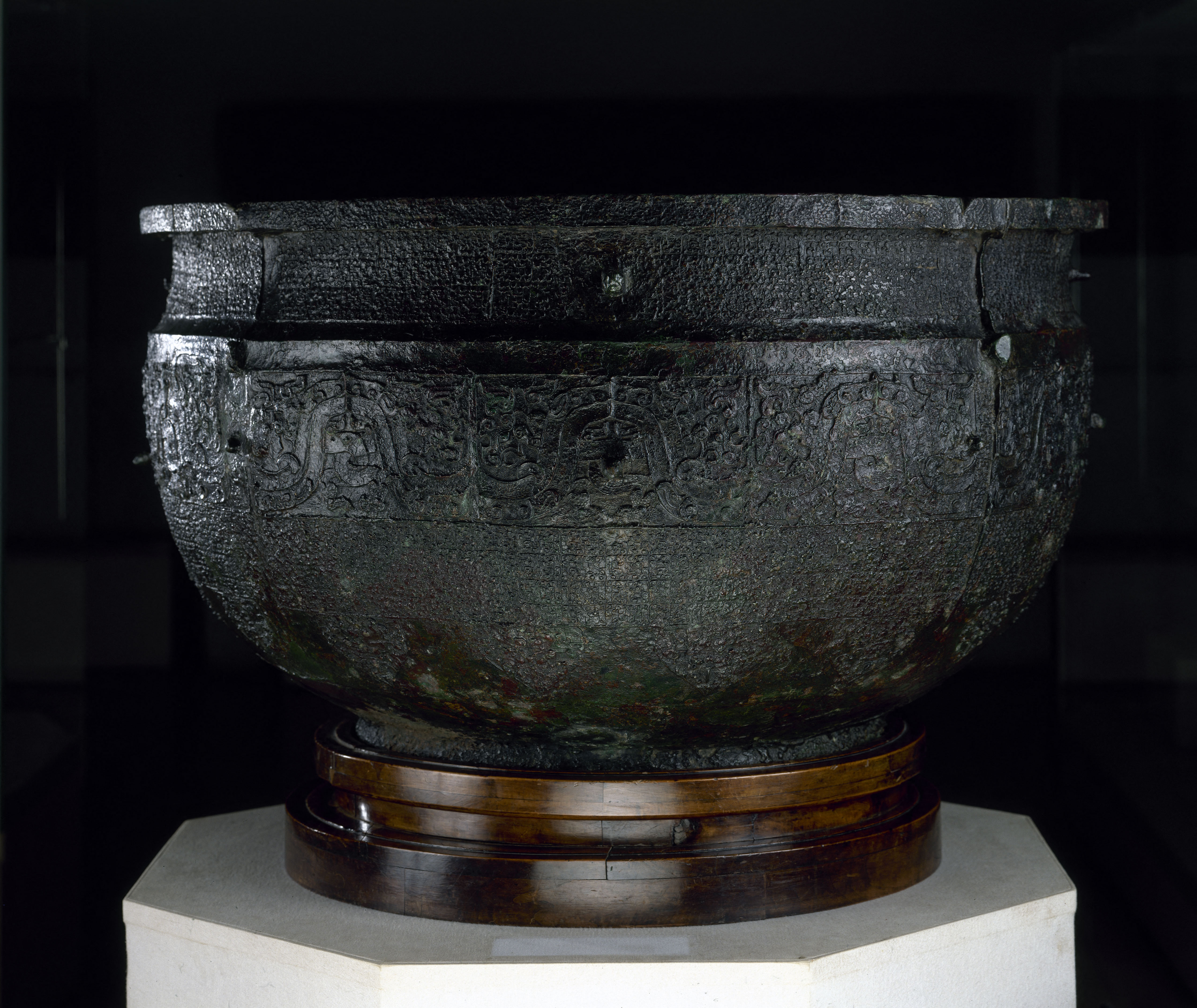
Bassin jian
Bronze, Fonte, Fonte au moule
Objet religieux, Vase
Legs : Cernuschi, Henri
M.C. 685
A certain number of large basins date from the late 4th and 5th centuries. Containing ice or very hot water, they kept fermented beverages cool or warm at banquets. The famous jian in the Henri Cernuschi collection is one of the largest known specimens of this kind, and the most impressive one in Western collections.
The large relief design on the body features a wide undulating ribbon, suggesting the shape of clouds or dragons. This theme, commonly found in the late Western Zhou period, appears over a ground of small overlapping geometrical motifs; it was frequently used in the Jin principality factories; numerous fragments of carved moulds have been found at kilns in Houma, Shaanxi province.
As in the largest jian in Shanghai Museum, triangular motifs, like pendants, create a rhythmic contrast between the parts abundantly decorated with small worm-like motifs and the rest of the surface of the vase left smooth.
Fastenings points remain in the middle of the sides and on the three ridges left at the roughly fettled joins of the moulds. It is impossible to know exactly what elements were attached to them. On the ridges, these may have been semi-circular-section handles featuring a stylised mask in the upper part, and possibly hanging rings, an arrangement commonly found at the time. In the middle of the sides, the upper fastening point is not placed below the neck but in the middle of the upper decorative band.